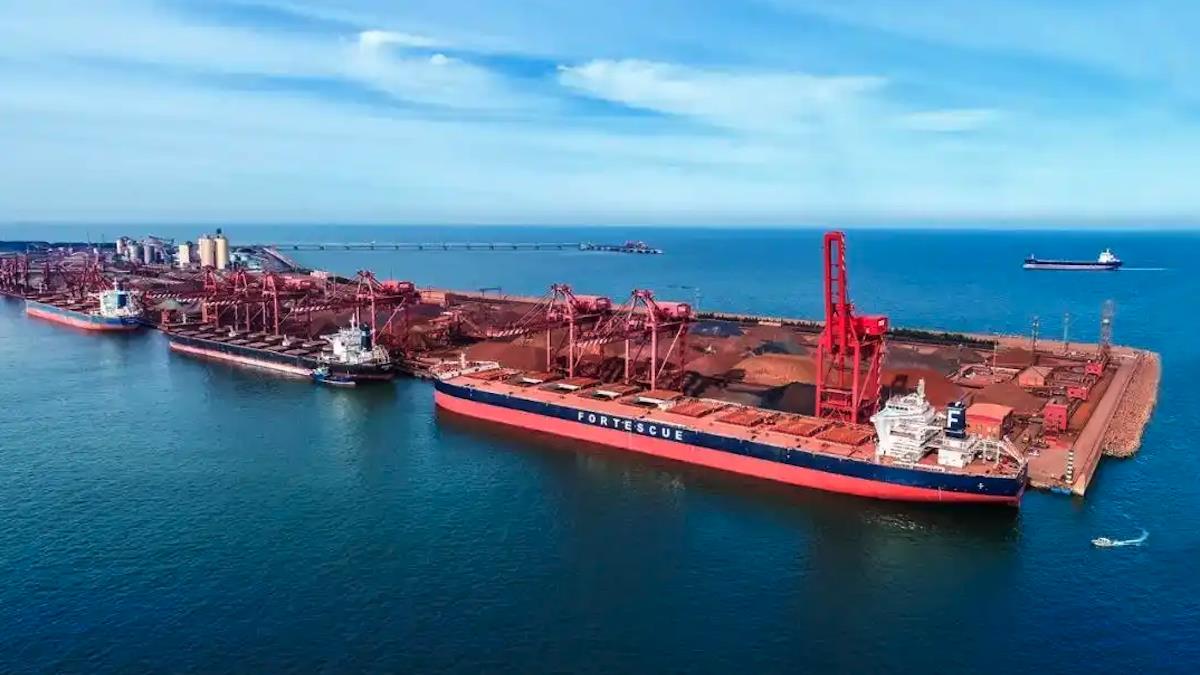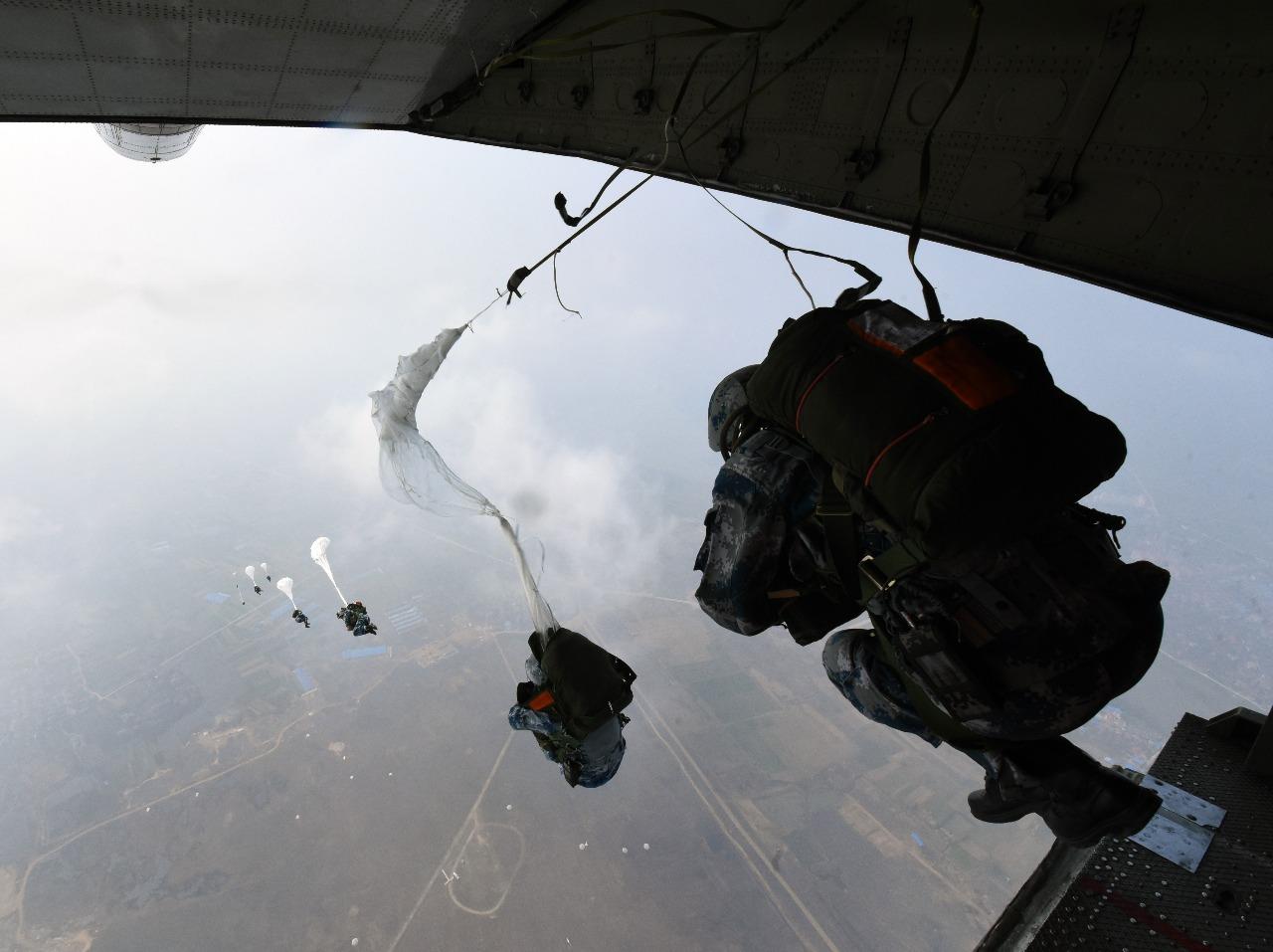
Russia Quietly Arming China's Paratroopers For Taiwan Fight
Last month, the Royal United Services Institute (RUSI) reported that Russia has agreed to supply China with airborne military equipment and training to support the latter's preparations for a potential invasion of Taiwan by 2027, according to documents obtained by the Black Moon hacktivist group and verified by independent sources.
The deal, signed in 2023, includes 37 BMD-4M amphibious assault vehicles, 11 Sprut-SDM1 anti-tank guns and several command platforms, all modified to integrate Chinese communications systems.
Russian instructors are training a battalion of Chinese paratroopers in equipment operation and airborne tactics, with collective exercises scheduled on Chinese territory.
The agreement also transfers technologies that enable China to localize and scale the production of similar systems. Rosoboronexport and multiple Russian defense firms manage the collaboration, while China's Central Military Council oversees implementation.
The strategic aim is to enhance China's air maneuver capabilities, allowing armored units to be airdropped near Taiwan's ports and airfields, bypassing the risks of amphibious landings.
This capability could enable the rapid seizure of critical infrastructure before Taiwanese forces mobilize. RUSI analysts Oleksandr Danylyuk and Jack Watling suggest that the training and command procedures are the deal's core value, given Russia's combat experience.
China's acquisition of Russian training and equipment feeds directly into its ongoing airborne modernization, yet its forces remain constrained by critical capability gaps in a Taiwan invasion scenario.
Cristina Garafola mentions in a March 2022 China Maritime Studies Institute (CMSI) report that the People's Liberation Army Air Force (PLAAF) Airborne Corps has modernized into combined-arms brigades, fielding armored fighting vehicles, artillery, drones and benefiting from growing strategic airlift, enabling paradrops, heavy drops and mechanized maneuver for a joint island-landing campaign.
Latest stories Typhon in Japan changes the game - and China knows it
China's cargo ban gives new meaning to BHP's 'Broken Hill' origin
Furthermore, Daniel Fu mentions in a June 2023 Jamestown Foundation article that recent reforms in the PLAAF Airborne Corps have streamlined command structures and introduced combined arms brigades, while elite paratrooper units conduct frequent joint exercises simulating island assaults.
He adds that PLAAF Airborne Corps doctrine emphasizes surprise, electronic warfare, and rapid deployment to seize strategic infrastructure.
Delving into the possible roles of China's airborne forces in a Taiwan invasion, Roderick Lee notes in the 2022 book“Crossing the Strait: China Prepares for War With Taiwan” that China's airborne forces will be an essential part of a joint island landing campaign (JIIC), working in tandem with amphibious forces to increase the odds of a successful landing.
Despite modernization efforts, the PLAAF Airborne Corps may still face significant capability gaps. Garafola notes it has limited heavy airlift, unclear integration with PLA Ground Force and Marine Corps air assault units, no large-scale combat experience and vulnerable transports and paratroopers in contested airspace.
Questions also remain about its ability to operate in degraded electromagnetic environments and sustain combat power ashore. Lee adds that China has a limited number of air transport hubs capable of supporting large-scale air transport operations.
He mentions Wuhan, Kaifeng/Zhengzhou, Beijing and Chengdu as likely hubs for airborne operations against Taiwan. However, Lee says that while Wuhan and Kaifeng/Zhengzhou are close to PLAAF Airborne Corps garrisons, they have insufficient space to land and load the entire PLAAF's transport fleet.
As for Beijing and Chengdu, he notes their bigger capacity than the former two hubs, but they are far away from PLAAF Airborne Corps garrisons, with distance adding a day of rail transit time.
In terms of combat power, Mark Cancian and others mention in a January 2023 report for the Center for Strategic and International Studies (CSIS) that while China could use airborne forces to seize Taiwanese airfields, their effectiveness may be found wanting.
Citing past operations such as the Invasion of Crete in 1941 and, more recently, the Battle of Hostomel in 2022, they say airborne forces could not reliably capture and hold airfields.
Airborne units are lightly armed and dependent on vulnerable airlift logistics, while airfields provide little cover, leaving troops largely exposed. Without an immediate link-up with heavier ground forces, they risk encirclement.
As a result of those limitations, Cancian and others point out that in their simulations of a Chinese invasion of Taiwan, seizing airfields remained a critical but largely unattained objective.
Taiwan also has a formidable arsenal that poses a serious challenge to airborne operations, with Tianran Xu noting in an April 2025 Open Nuclear Network article that the self-governing island has 200 Patriot PAC-2 Guidance Enhanced Missiles (GEM), with around 400 Tien Kung-2 and approximately the same number of Tien Kung-3 interceptors.
Beyond those medium-range systems, Taiwan has a significant stockpile of Stinger man-portable air defense systems (MANPADS) and anti-aircraft guns, posing a serious risk to low-flying aircraft.
Taiwan could also deploy ad-hoc obstacles (e.g., Rommel's Asparagus) on open terrain to stop helicopter landings, pre-emptively crater runways, and rapidly mobilize regular and reserve units to surround airborne forces.
But despite those shortcomings, Cancian and others note that airborne forces are more effective in isolating battle areas than seizing airfields, assisting amphibious units in establishing a beachhead.
If so, China may use airborne forces in vertical envelopment maneuvers, dropping off troops at the rear or flanks of opposing forces resisting an amphibious assault on Taiwan's 20“red beaches” – possible landing sites for Chinese forces – thereby cutting them off from retreat, resupply, and reinforcement.

Sign up for one of our free newsletters
-
The Daily Report
Start your day right with Asia Times' top stories
AT Weekly Report
A weekly roundup of Asia Times' most-read stories
Yet even if China closes its airborne gaps, larger geopolitical realities shape how far Russia will go in backing any Taiwan campaign.
While China has offered substantial but carefully calibrated assistance to Russia's war effort in Ukraine, with NATO leaders calling the former the latter's key enabler , the two authoritarian powers may not meet eye-to-eye over Taiwan.
Eugene Rumer states in a September 2024 Carnegie Endowment for International Peace (CEIP) repor that Russia does not see a Chinese military campaign to seize Taiwan as in its interest.
Rumer points out that while Russia views Taiwan as an“inalienable” part of China, it sees war over the self-governing island as fraught with risk, noting the possible global catastrophe from US-China nuclear escalation, threats to its strategic Pacific assets (i.e., Vladivostok naval base, Viliuchinsk submarine base and energy projects in Sakhalin), and massive economic disruption.
Citing Russian experts, Rumer says in such a contingency, Russia may offer China limited assistance such as energy, military technology, intelligence and cyber assistance – mirroring the latter's measured assistance to the former.
He notes that ultimately, Russia benefits more from Taiwan tensions that distract US resources from Europe into the Pacific rather than an actual war that would impose severe risks and costs.
Russia's aid could enhance China's airborne capability, but gaps in airlift, survivability and sustainment cast doubt on a potential victory. In a Taiwan clash, it's uncertain if China's paratroopers will cause havoc or be cut down before gaining a foothold.
Sign up here to comment on Asia Times stories Or Sign in to an existing accoun
Thank you for registering!
An account was already registered with this email. Please check your inbox for an authentication link.
-
Click to share on X (Opens in new window)
X
Click to share on LinkedIn (Opens in new window)
LinkedIn
Click to share on Facebook (Opens in new window)
Facebook
Click to share on WhatsApp (Opens in new window)
WhatsApp
Click to share on Reddit (Opens in new window)
Reddit
Click to email a link to a friend (Opens in new window)
Email
Click to print (Opens in new window)
Print

Legal Disclaimer:
MENAFN provides the
information “as is” without warranty of any kind. We do not accept
any responsibility or liability for the accuracy, content, images,
videos, licenses, completeness, legality, or reliability of the information
contained in this article. If you have any complaints or copyright
issues related to this article, kindly contact the provider above.

















Comments
No comment